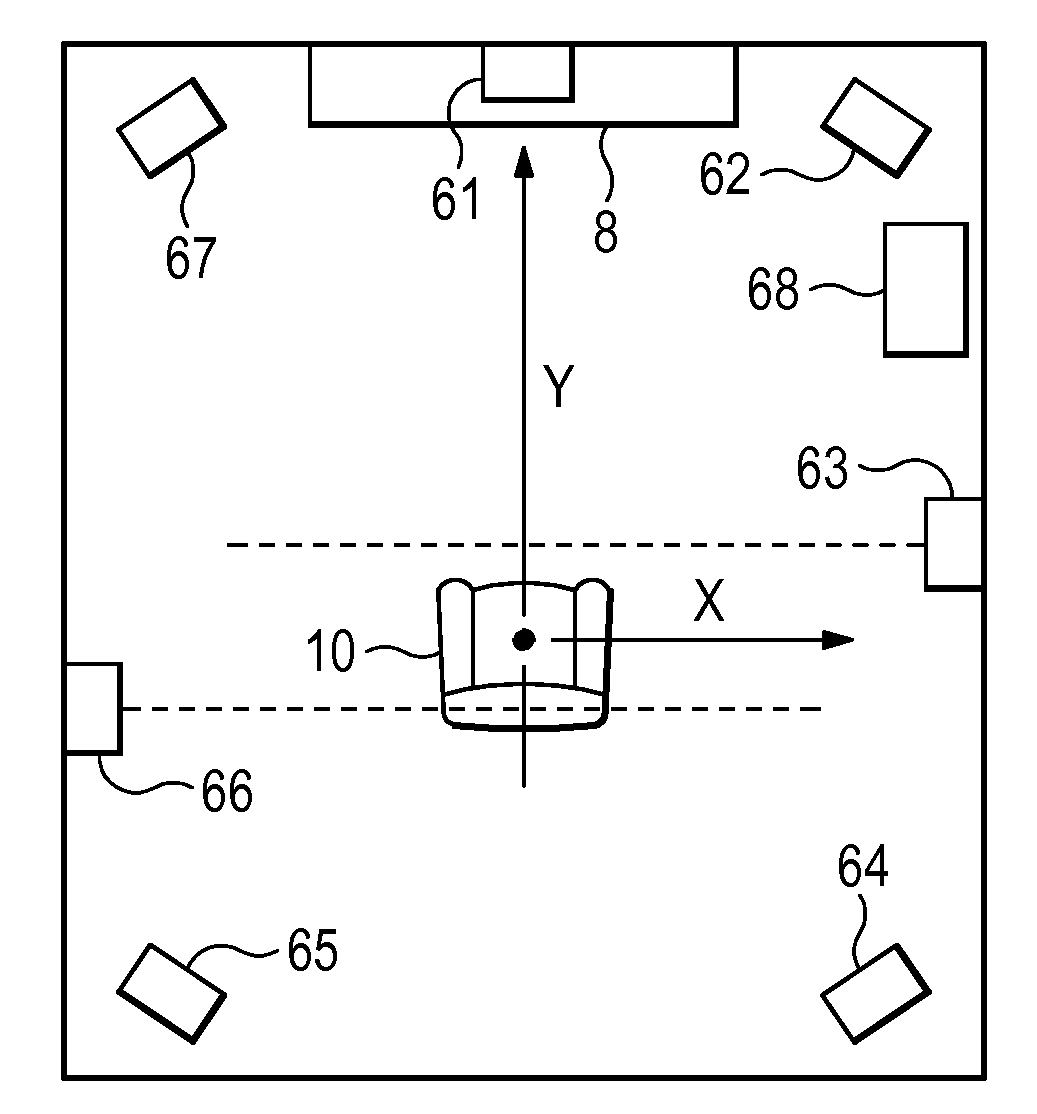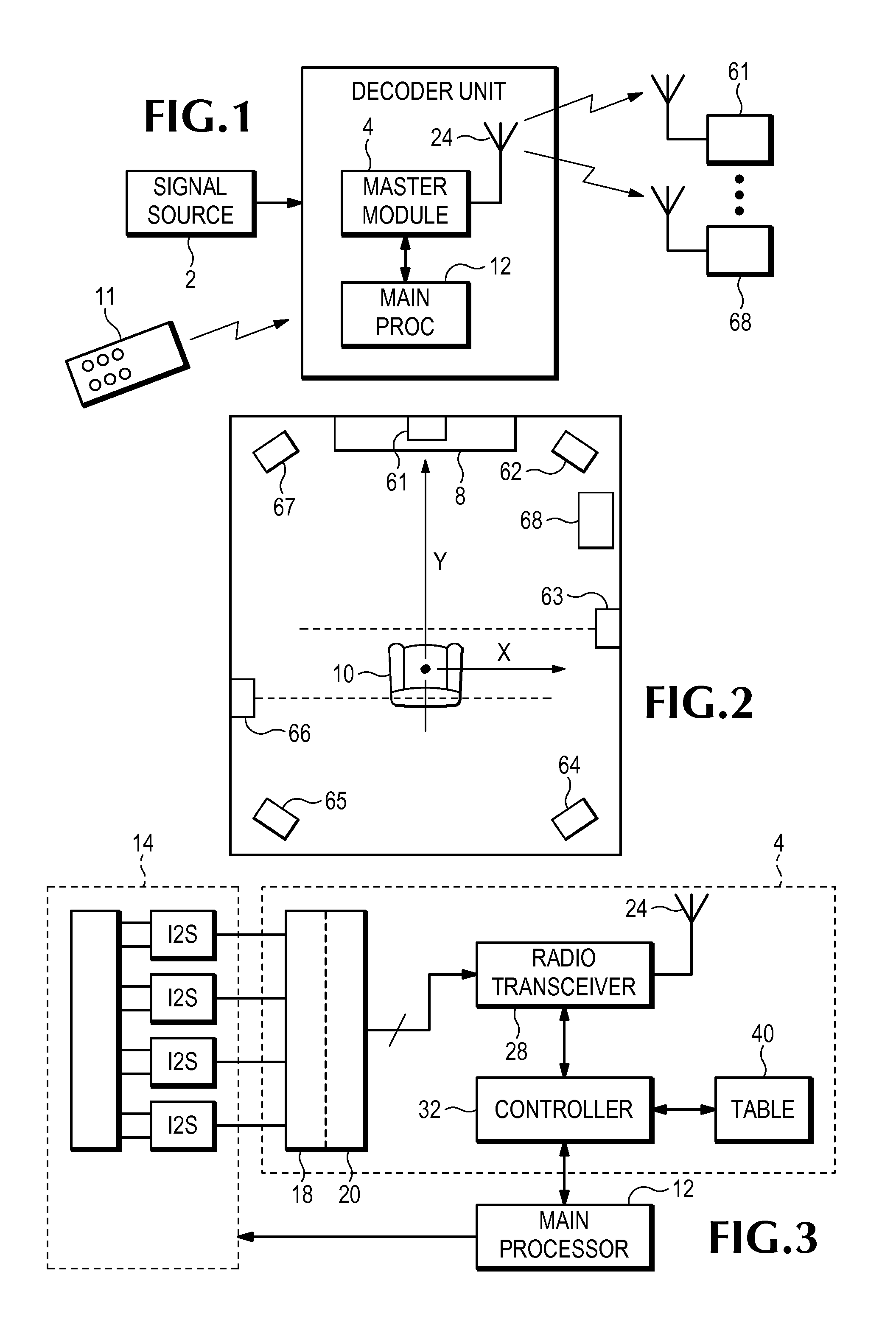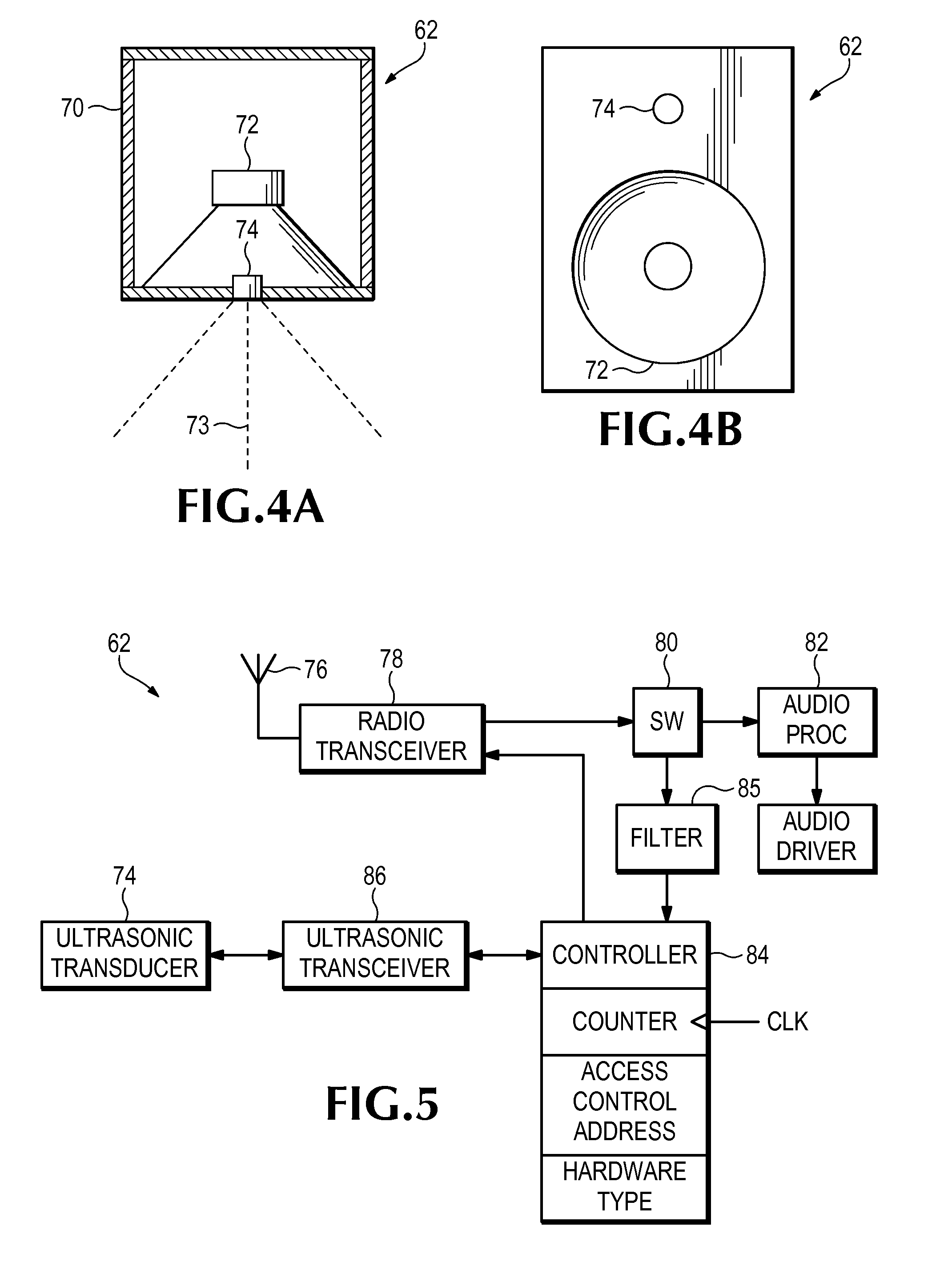Method of identifying speakers in a home theater system
a home theater system and speaker technology, applied in stereophonic systems, stereophonic arrangments, electrical appliances, etc., can solve the problems of not meeting the industry standard for mapping speaker positions to i2s bus channels, placement of subwoofers, and timing of audio signals for driving subwoofers, etc., to achieve satisfactory operation of home theater systems
- Summary
- Abstract
- Description
- Claims
- Application Information
AI Technical Summary
Benefits of technology
Problems solved by technology
Method used
Image
Examples
Embodiment Construction
[0021]As used in this detailed description and in the appended claims, the term “audio” as applied to a signal means a signal having a frequency within the accepted standard range of audible frequencies, i.e. from 20 Hz to 20,000 Hz, whereas “ultrasonic” as applied to a signal means a signal having a frequency higher than 20 kHz. As applied to an electro-acoustic transducer, the term “ultrasonic” as used herein means that the transducer is able to emit and receive ultrasonic acoustic signals.
[0022]The 7.1 channel home theater system shown in FIG. 1 comprises a signal source 2, which may, for example, be a satellite receiver, a cable TV decoder or a DVD player, eight speakers 61-68 (a center speaker 61, six surround speakers 62-67 and a subwoofer 68) and a display unit 8. The home theater system also includes a home theater decoder 14 (FIG. 3), which receives audio data from the signal source and generates four I2S serial bus signals, as described above. The home theater decoder may ...
PUM
 Login to View More
Login to View More Abstract
Description
Claims
Application Information
 Login to View More
Login to View More - R&D
- Intellectual Property
- Life Sciences
- Materials
- Tech Scout
- Unparalleled Data Quality
- Higher Quality Content
- 60% Fewer Hallucinations
Browse by: Latest US Patents, China's latest patents, Technical Efficacy Thesaurus, Application Domain, Technology Topic, Popular Technical Reports.
© 2025 PatSnap. All rights reserved.Legal|Privacy policy|Modern Slavery Act Transparency Statement|Sitemap|About US| Contact US: help@patsnap.com



